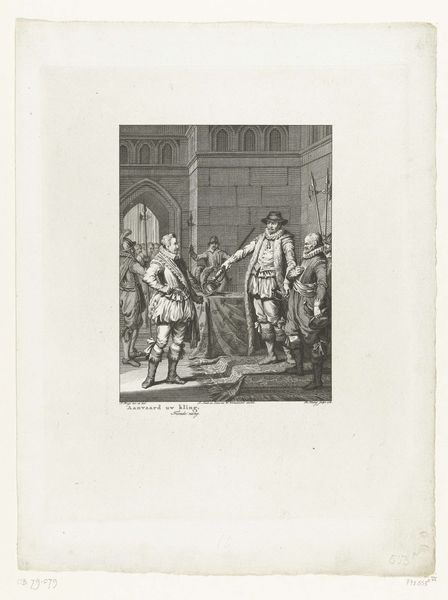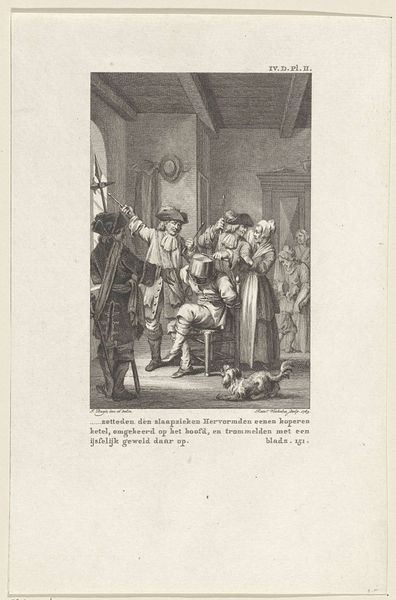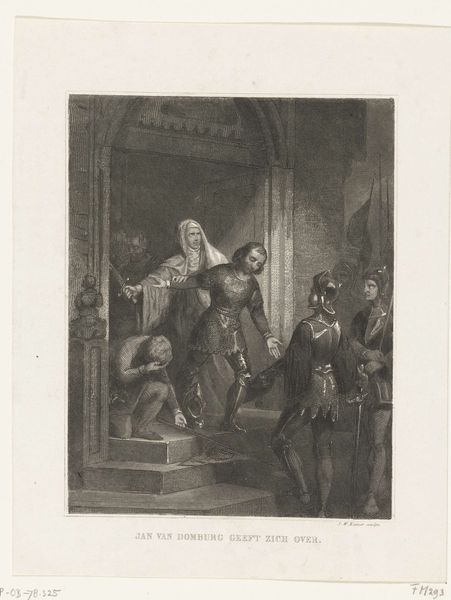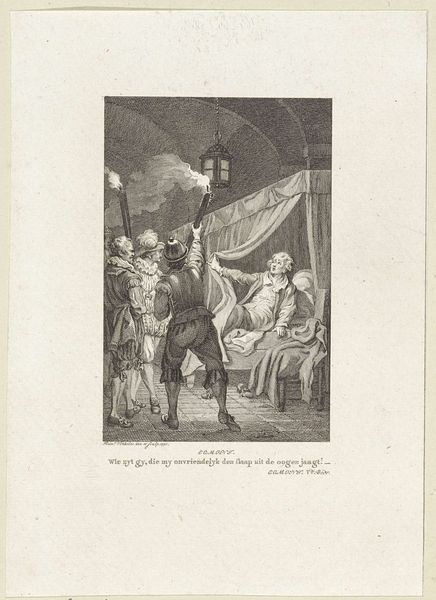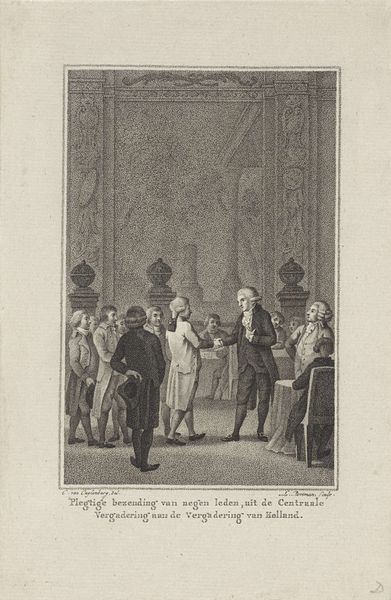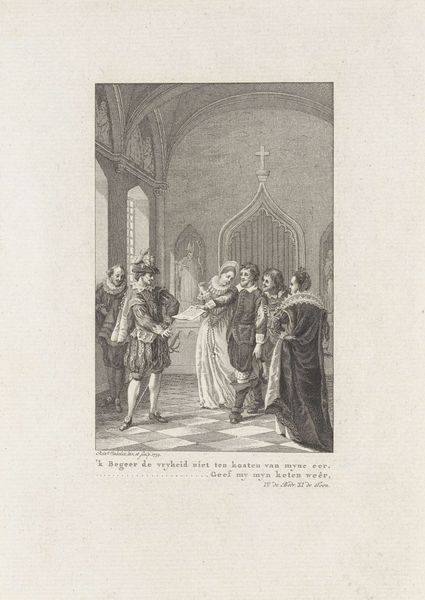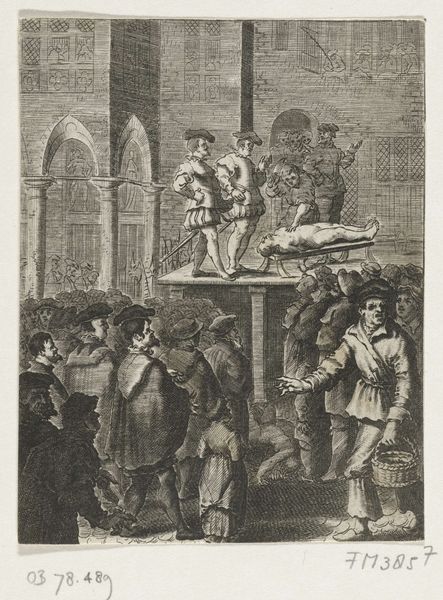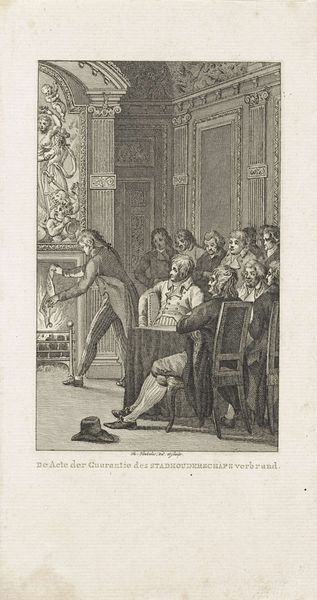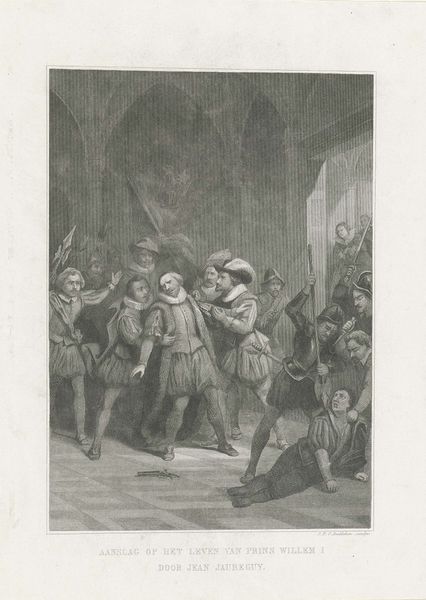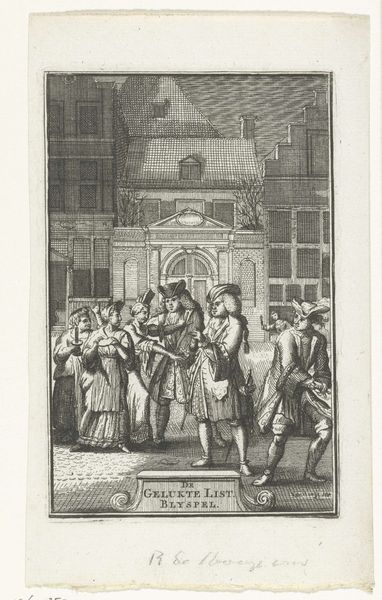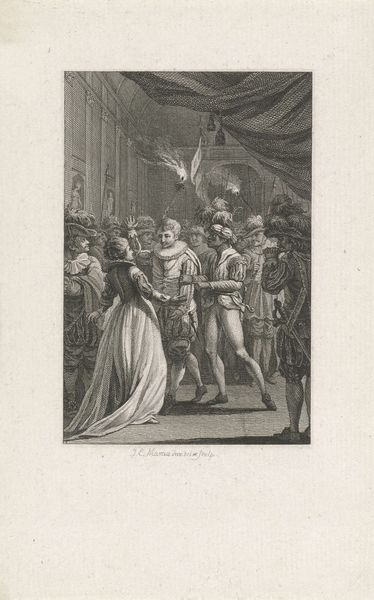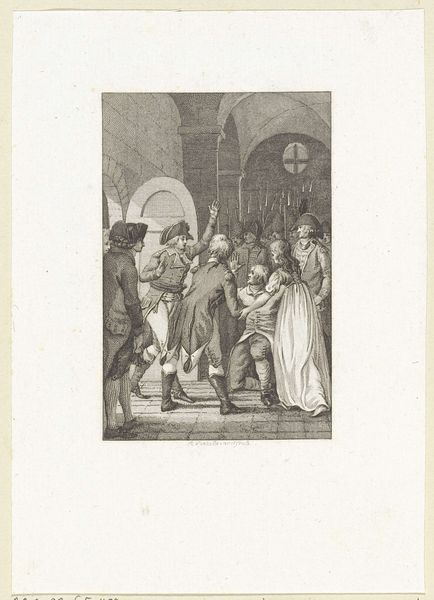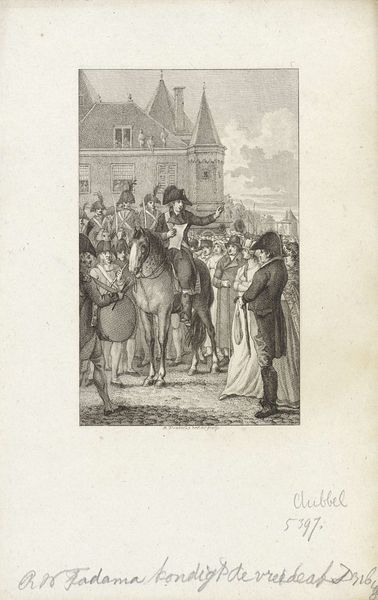
print, engraving
#
medieval
# print
#
pen sketch
#
pencil sketch
#
old engraving style
#
figuration
#
line
#
history-painting
#
academic-art
#
engraving
#
realism
Dimensions: height 114 mm, width 74 mm
Copyright: Rijks Museum: Open Domain
Curator: Standing here before us is a 19th-century print entitled "Troonsafstand van Karel V, 1555," housed right here in the Rijksmuseum. Editor: The mood is somber, almost reverent, don't you think? The gray scale heightens the sense of formality. Curator: Indeed. As a print, specifically an engraving, its very creation is a testament to accessibility. Reproduction democratizes imagery, disseminating representations of power and key historical moments to a broader public. What sociopolitical contexts influenced its commission? Editor: The depiction focuses on the abdication of Charles V. in 1555, a pivotal point. It’s all about power, transition, and even vulnerability. Look at Charles himself, leaning, relinquishing the physical symbols of his reign: the crown and scepter being gathered. Consider the message: The burdens of leadership are heavy. And the subtle vulnerability is gendered in its way. Curator: Agreed. I am intrigued by the choice of engraving; it mirrors older forms of image production and authentication prevalent during the 16th century itself. The line work is quite impressive, and the density builds a surprisingly realistic texture. I see pen and pencil strokes used with realism! Editor: Right. And, zooming out a bit, think about what moments get commemorated and reproduced. The act of relinquishing power is, in some ways, as important as claiming it. Who controlled that reproduction and circulation of the moment is worth unpacking more... Whose perspective does this uphold and amplify, right? Curator: Exactly, and perhaps even to inspire some version of political reality... From a materials perspective, the paper and ink, and the labor to produce it. These factors also place limits and influence production outcomes, of course. What does the paper feel like? Editor: To bring us back to Charles for a moment, it feels to me that the print hints at some deep commentary. Charles’s health issues were very serious, which shaped some colonial practices at the time. His image as an old man needing support has resonance that still touches contemporary social policies. Curator: Well, examining this piece reminds us that we can better investigate images by exploring their production and their meanings and by also situating their subjects within specific social structures. Editor: I concur. And also, looking at the abdication event of Charles V and this engraving offers us a powerful glimpse into gender, politics, and a shifting European identity as seen from centuries removed from the historical moment.
Comments
No comments
Be the first to comment and join the conversation on the ultimate creative platform.
